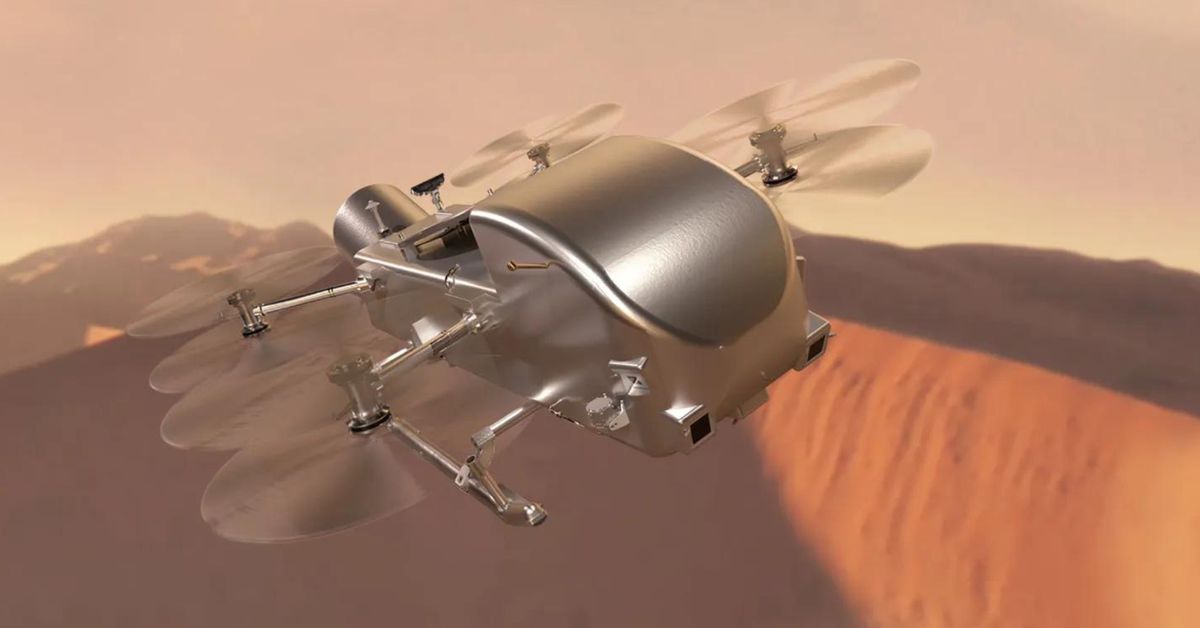
NASA has been given the go-ahead to send a flying drone-like lander to explore Titan, the largest of Saturn’s 146 moons.
Targeting a July 2028 launch, the agency announced on Tuesday that it can now complete the final design for Dragonfly — a Mars rover-sized rotorcraft that will be used to detect “prebiotic chemical processes common on both Titan and the early Earth before life developed.”
If all goes according to plan, the eight-rotor drone is scheduled to arrive at Titan in 2034, where it will fly to dozens of “promising locations” to characterize the habitability of Titan’s environment and hunt for any signs that life once existed on the organic-rich moon. Titan’s denser atmosphere (around four times that of Earth’s) will aid the rotorcraft to “hop” up to five miles once per full Titan day (16 Earth days).
Dragonfly is expected to cover over 108 miles over the course of its 32-month mission — more distance than all of NASA’s Mars and Earth-Moon rovers combined. NASA estimates the rotorcraft will have a total lifecycle cost of $3.35 billion, roughly twice the expenditure predicted when the project was announced in 2019.
“Dragonfly is a spectacular science mission with broad community interest, and we are excited to take the next steps on this mission,” said Science Mission Directorate associate administrator Nicky Fox in NASA’s press release. “Exploring Titan will push the boundaries of what we can do with rotorcraft outside of Earth.”







